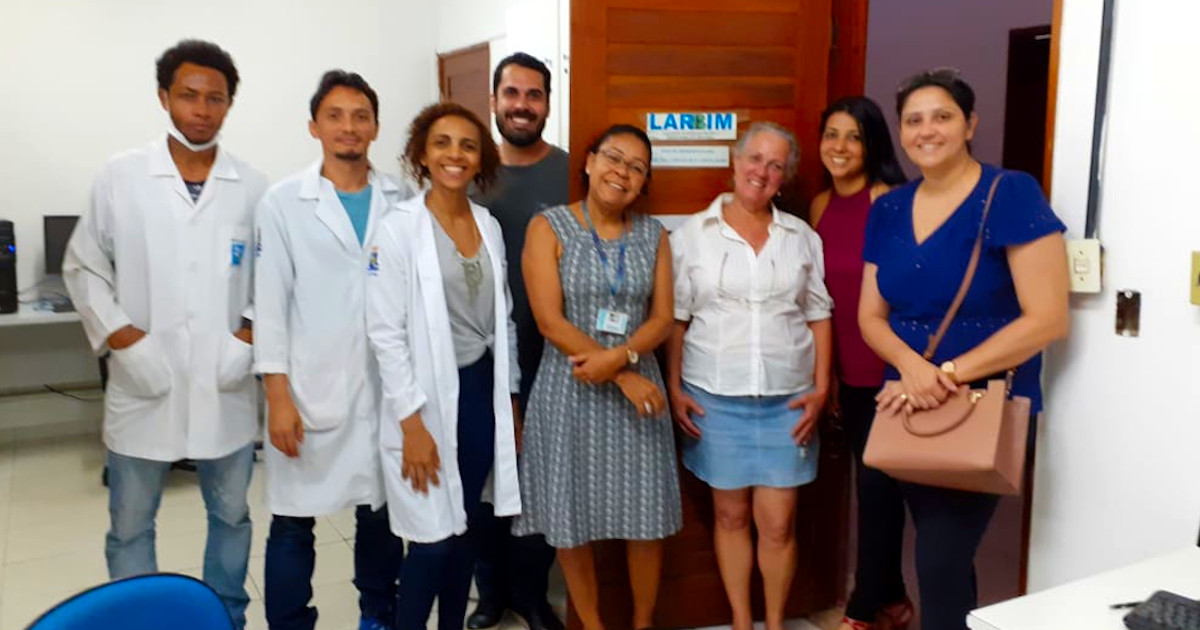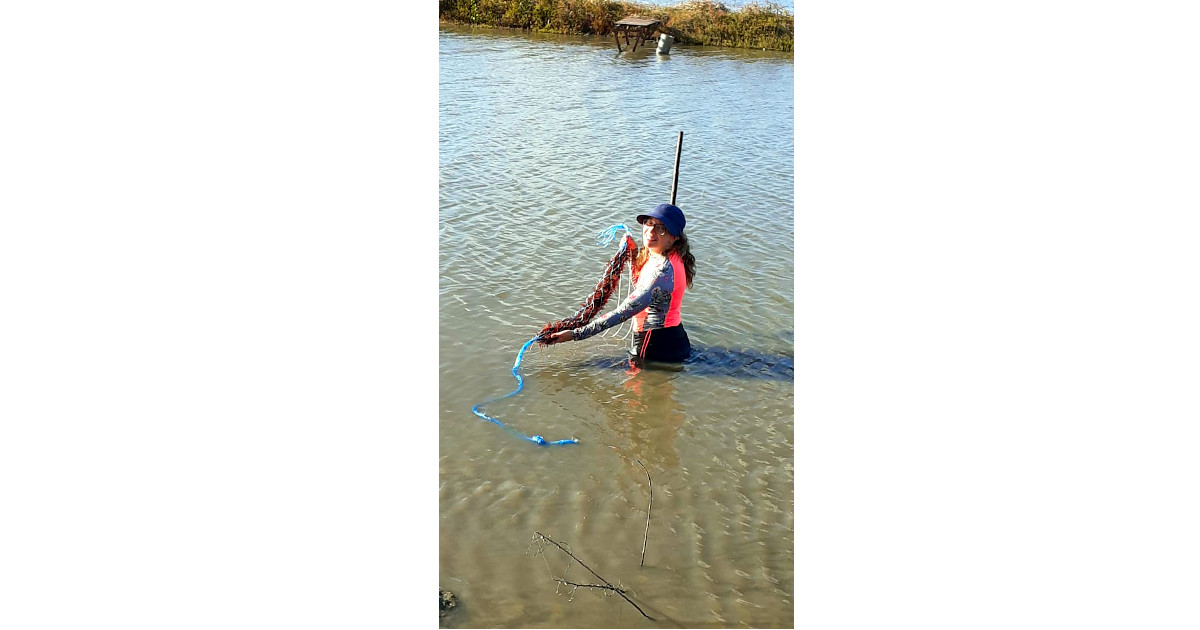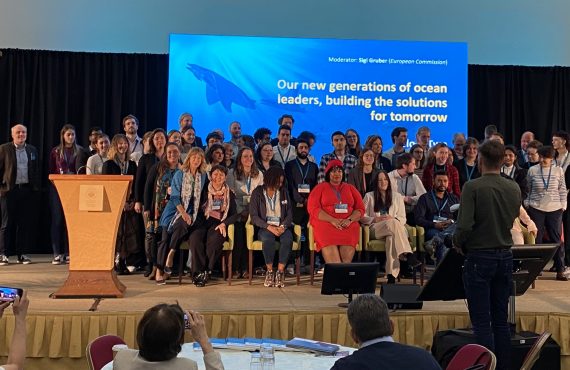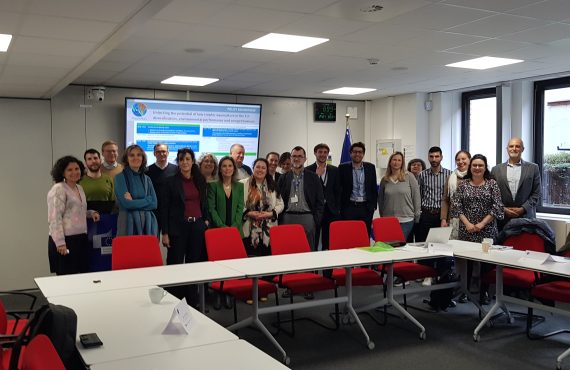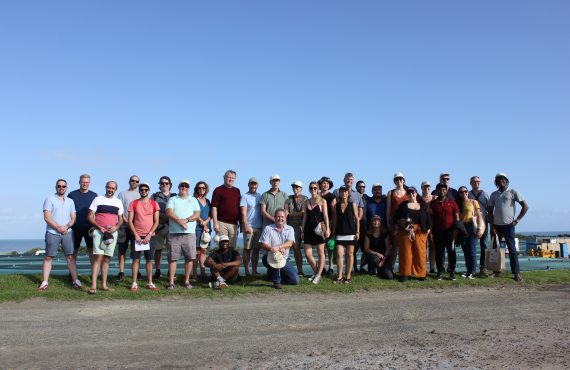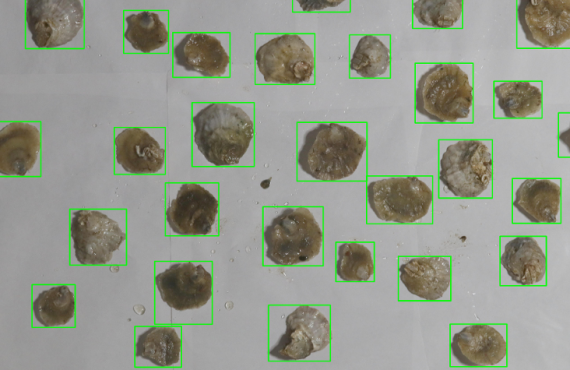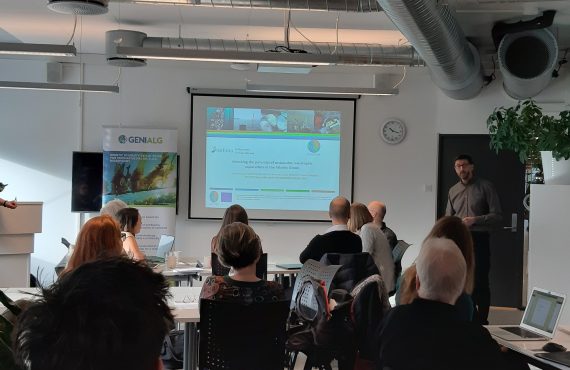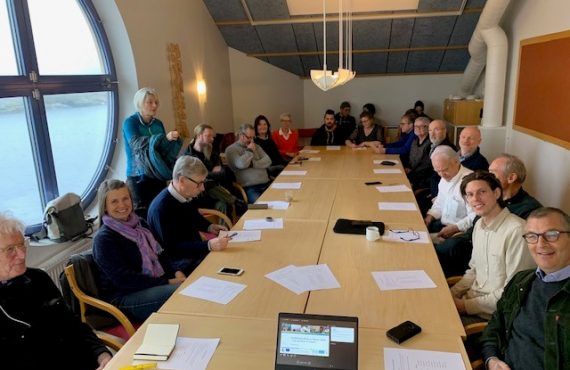Aerial view from Primar Aquacultura area. Photo credit: Erich Matos Rodrigues.
From Northwest Brazil, Primar Aquacultura farms oysters, shrimp and sea horses together with an exhaustive respect for nature. Surrounded by the tropical landscape, the aquaculture farm is located in the estuary of the Nísia Floresta-Papeba-Guaraíras lagoon complex, in the southeasternen coast of the state of Rio Grande do Norte. The farm covers 40 hectares, a surface equivalent to 80 football fields, where it farms several species in an area renowned by shrimp farming.
Answering the call of organic aquaculture
Shrimps were the first species for this company. Biologist Alexandre Wainberg M.Sc. (in memoriam) started to produce native shrimp and Pacific shrimp (Litopenaeus vannamei) in the nineties. In 2002 the farm adapted its production process following the guidelines from the International Forum of Organic Associations and Movements (IFOAM). Its unique system, the Organic Aquaculture Primar System, takes into account environmental and social impacts to curb its impacts on the environment. For instance, they promote direct sells to consumers to offer them direct access to first-quality products.
Oysters were the second species to be introduced in the Primar Aquacultura ecosytem. Crassostrea gasar, a Brazilian native oyster species, was incorporated to the ponds where shrimp was already growing.
However, there was still a gap for enhancing the sustainability of their production process . “One of the bottlenecks to increase oyster farming in Brazil is the production of selected seeds. The capture of seeds in the wild does not guarantee genetic improvement or selection of the best animals for cultivation.”, says Marcia Kafensztok, owner and CEO of Primar Aquacultura. Its proposal to tackle that challenge was the Primar laboratory, a hatchery with the capacity to produce 6 million seeds per year
“In Primar’s production ponds, we monitor the growth and performance of the best oyster batches, separating the specimens that perform better in terms of growth, shape and resistance, to form our breeding stock. The goal is to make a natural selection to get better Crassostrea gasar seeds for crops”Kafensztok says.
Still, there are many challenges to improve survival and mass production of this native Brazilian species. “Our efforts have been focused on increasing the feeding of oysters in the larval phase and improving the quality of water used in the laboratory.”, Kafensztok outlines.
The company also cultivates the longsnout seahorse Hippocampus reidi for ornamental and preservation purposes. This is aprotected species , whose current population is decreasing, according to the IUCN Red List of Threatened Species.
Industry and research, hand in hand
Historically Primar has a strong involvement with the academic world. Its founder, biologist Alexandre Wainberg initiated the intense exchange of information and knowledge. In the last years, Primar Aquacultura has been striving to maintain this link with the academy, as research and production, academia and private initiative, need to go together with the objective of having a performance focused on excellence.
“We have been working to transform Primar Aquacultura into a research institute for estuarine aquatic organisms. Today we have agreements with more than 17 Brazilian federal universities, we host interns, in addition to an agreement with EMBRAPA, UNESP/CNPq (the Brazilian National Council for Scientific and Technological Development ) and our first international research agreement, signed with AquaVitae in 2019.”, Kafensztok details.
In AquaVitae, Primar Aquacultura participates in research on oyster and pond-based Integrated Multi Trophic Aquaculture (IMTA). Regarding oysters, the company will contribute to refine hatchery production for the native oyster Crassostrea gasar in Brazil by improving water quality and introducing native micro algae cultivation. Both tasks will contribute to adapt the cultivation to local conditions and curb the impacts on the ecosystem.
The transition from monoculture aquaculture to IMTA comes from the shrimp industry in Brazil as a way to diversify production and reach higher productivity. Shrimp is one of the key species for the Brazilian aquaculture sector, with 90,000 tons produced in 2019 according to the Brazilian Shrimp Farmers Association. Primar Aquacultura will participate in the testing of an Integrated Multi Trophic Aquaculture (IMTA) system on a commercial scale, farming shrimp, seaweed and oyster together in a process that uses waste from one species as feed for another.
More info at: https://www.primarorganica.com.br/
Photos in the gallery:
Introduction of macroalgae in Primar’s ponds, for AquaVitae work on pond-based IMTA. Photo credit: Marcia Kafensztok.
First growth test with the native microalgae on 300 litres bags at Primar´s hatchery. Photo credit: Marcia Kafensztok.
Our partners in AquaVitae case study on oysters: the Laboratory of Reef Environments and Biotechnology with Microalgae – LARBIM / UFPB, Laboratories of Microalgae of UFRN and EAJ/UFRN. Photo credit: Marcia Kafensztok.





